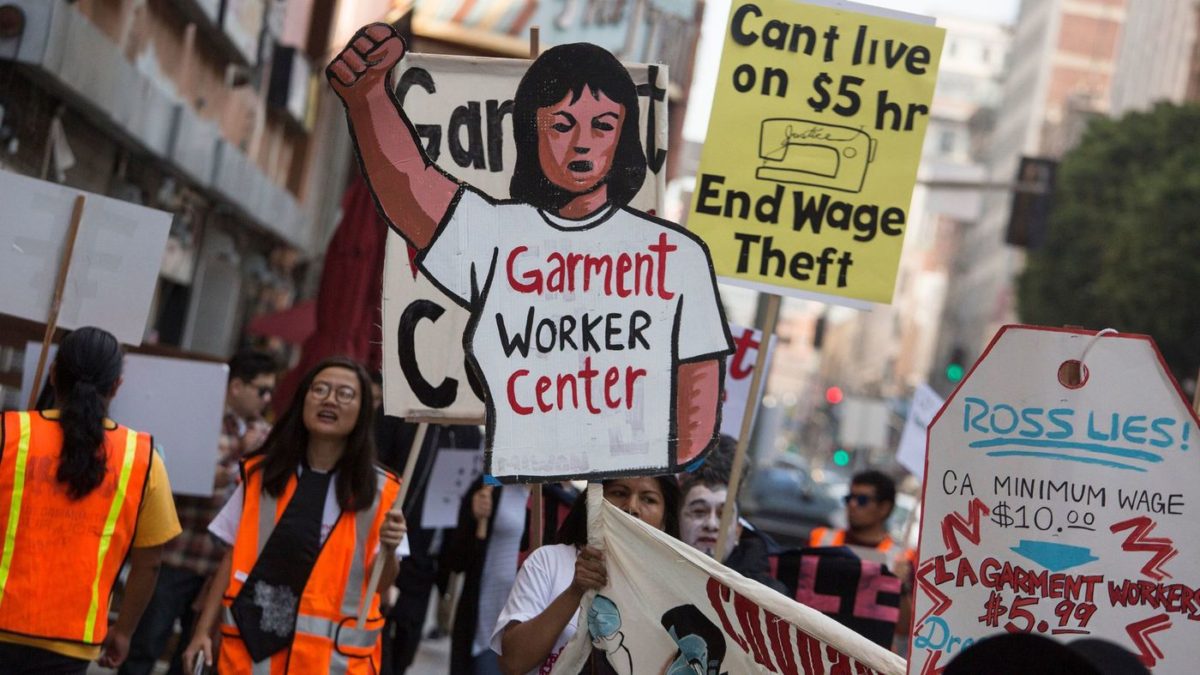By Guest Contributor: Sudip Bhattacharya (@ResistRun)
Chris Phan used to believe that they were an anomaly. After all, Phan and those around them in their community were working class Asian Americans; this didn’t match the mainstream perception of Asian Americans as economically and educationally privileged.
Eventually, Phan realized that what they and others experience on the economic margins is actually the norm for many.
“The reality is I know folks who are super poor and Asian American who have to rely on the informal economy to survive. And now, with my education, I know that’s not isolated to my family or experiences,” Phan explained.
According to the Washington Post, the income gap among Asian Americans, between its richest and its poorest members, is the highest among all U.S. racial groups. As reported by AAPI-Data, Cambodian and Bangladeshi Americans suffer from poverty rates as high as 20 and 25 percent, which is well above the 12 percent average for all Americans.
Phan, who is Filipino and Vietnamese-American, is part of the United Students Against Sweatshops at Rutgers University and the New Jersey chapter of Anakbayan.
“My work with USAS specifically has taught me how within this capitalist society, class cuts across many labels. That we all need to work to live.” Phan said, “And it expanded my racial analysis. It brought more clarity as to how Asian American labor is stratified and what types of labor Asian Americans have to do, such as domestic work, service and agricultural work.”
What Phan and others like them reflect is the need for a progressive Asian American politics that centers the lives of its poor and working class, and that interrogates the connection between capitalism and race. Otherwise, the inequality that many endure will fester and further marginalize Asian Americans who are already struggling to get by.
Race and Class
The U.S. is split between those at the top with access to necessary resources and everyone else spiraling deeper and deeper into debt. Political theorists Wendy Brown and Sanford Schram have described our modern political and economic era as one of “neoliberalism.”
Neoliberalism took hold during the Reagan administration in the 1980s. Under Reagan, the goal of policy-makers and institutions wasn’t to take care of people but to impose a free-market ideology on the rest of society. This meant cutting regulations on big business and lowering taxes for the wealthy. Democrats including President Clinton expanded the neoliberal regime by gutting important welfare programs at the expense of the working-poor.
With these changes, profits for major corporations and elites have grown while many Americans must fend for themselves.
“Seventeen percent of Americans are poor by international standards — living on less than half the nationwide median income. That’s more than twice the share of poor people in France, Iceland or the Netherlands,” Eduardo Porter from the New York Times stated.
Yet, the problem of inequality and exploitation is not a new phenomenon in the U.S. Rather, when one incorporates the history of enslavement, Jim Crow, and the rise of the prison-industrial complex, it becomes evident that the U.S. capitalist order has always thrived on hierarchy and oppression and that race has been at its core.
Legendary political scientist Cedric Robinson understood this best. In Black Marxism: The Making of the Black Radical Tradition, Robinson explained how Western capitalism depended on labor that’s been racialized as Other, especially that of indigenous and black bodies.
“Leopold’s Congo, Harry Johnston’s Central Africa, Cecil Rhode’s southern Africa, Lugard’s West Africa, Portuguese Africa, and French Africa as well as the New World’s slave descendants all contributed to the further development of the capitalist world system,” Robinson explained. “As peasants, as tenant farmers, as migrant laborers, as day laborers, as domestic servants, and as wage labor, their expropriation extended into the present century.”
By attaining a longer and deeper view of U.S. history, one recognizes the integral role race has played in how U.S. capitalism has functioned and that race and class are connected in how bodies are ranked on the economic hierarchy.
For instance, the white working class have suffered too, but as explained by Robinson and others like David Roediger, they have also benefited from having more access to certain resources like better housing and policies like the GI Bill which was passed after WWII.
Asian immigrants, too, have been exploited by white political and economic interests when they first arrived to the U.S. Many were forced to earn what they could in difficult conditions for significantly lower pay than white workers, according to historian Erika Lee.
Despite the formation of an Asian American middle class by the 1970’s, there remains a sizable portion of Asian immigrants and Asian Americans trapped in low-wage work. As noted by sociologist Eric Tang, groups like Cambodian Americans are mired in generational poverty and trauma due to changes to the social welfare net, lack of jobs and rising costs of living.
The Way Forward
Timmy Lu is the founder of AAPIs for Civic Empowerment, a California-based coalition of existing Asian American organizations dedicated to building the political power of working class Asian American and Pacific Islanders. Lu himself has over a decade of organizing experience, having also worked with the Asian Pacific Environmental Network.
“Who gets to be a community leader is typically a middle-class spokesperson, business leaders in these ethnic economies, typically restaurant owners actively exploiting their co-ethnic peers,” he explained. “For working class AAPIs, it’s really hard to get your issues and concerns placed at the forefront. Even if you’re recognized, your class experience night not be.”
Similarly, David Thai, a first-generation college student, cited the gap between what certain Asian American activists discuss, such as the bamboo ceiling or the lack of representation in the media, and the day-to-day realities for low income Asian Americans like him.
“Many of us are dealing with some of the things that are very alive and well in our livelihoods, like how we’re supposed to survive paycheck to paycheck, how we can survive the day and avoid things like drug addiction,” Thai said.
Therefore, the solution for Lu and Thai has been to create spaces to elevate the voices and experiences of poor and working class AAPI.
While attending the University of Pennsylvania, Thai co-founded a group for first generation low income Asian Americans where they could support one another. AAPIs for Civic Empowerment, Lu explains, engages with working class Asian communities throughout the year on issues that matter most to them such as raising the minimum wage.
“A part of the tactical strategy is to mobilize Asian Americans who agree that income inequality and a more redistribute society with a greater deal of equality is a significant and important project,” he said.
By elevating the needs of poor and working class Asian Americans, issues like protecting Affirmative Action, affordable housing, a livable wage, expanding social welfare programs and unionization become the priority for all Asian Americans to fight for.
Further, by prioritizing poor and working class Asian Americans, it fosters the necessary space for the poor and working class themselves to lead an creates a progressive alternative to the reactionary and toxic policies pushed forward by right-wing members of the Asian American community.
“We’re not going to let the Chinese Tea Party to claim to speak for us,” Lu said, referring to those members of the Chinese American community who are more affluent and conservative compared to poorer and working class Asian Americans.
It is the intimate relationship that poor and working class Asian Americans have with issues like job insecurity and lack of affordable healthcare that helps create a clearer vision of what needs to get done to have an egalitarian society.
“The solutions would be coming from the bottom, not the top,” Phan said. “They have an intuitive class analysis from their lived experiences that allows them to dream of a better and new world.”
Finally, the centering of poor and working class AAPI voices forces activists, academics and ordinary people to confront systems of power like capitalism and white supremacy.
“The biggest lesson for me and something I’ve grappled with politically is what is at the root of experiences that my family have had,” Lu explained, referring to when he first began organizing around issues of class and race which have been personal to him, “Is it capitalism? Is it globalization? Are these things fundamental to the functioning of the U.S.? These were the questions I had to grapple with. It led to me a lot of other questions and answers.”

Sudip Bhattacharya is a PhD student in Political Science at Rutgers University and staff writer at The Aerogram. His whose work has also been published in CNN, Lancaster Newspaper, The Daily Gazette, The Jersey Journal, The Washington City Paper, Media Diversified (Writers of Colour) and AsAm news. He focuses on issues of race and social justice through his work, and is a fervent optimist, but not the annoying kind.
Learn more about Reappropriate’s guest contributor program and submit your own writing here.

